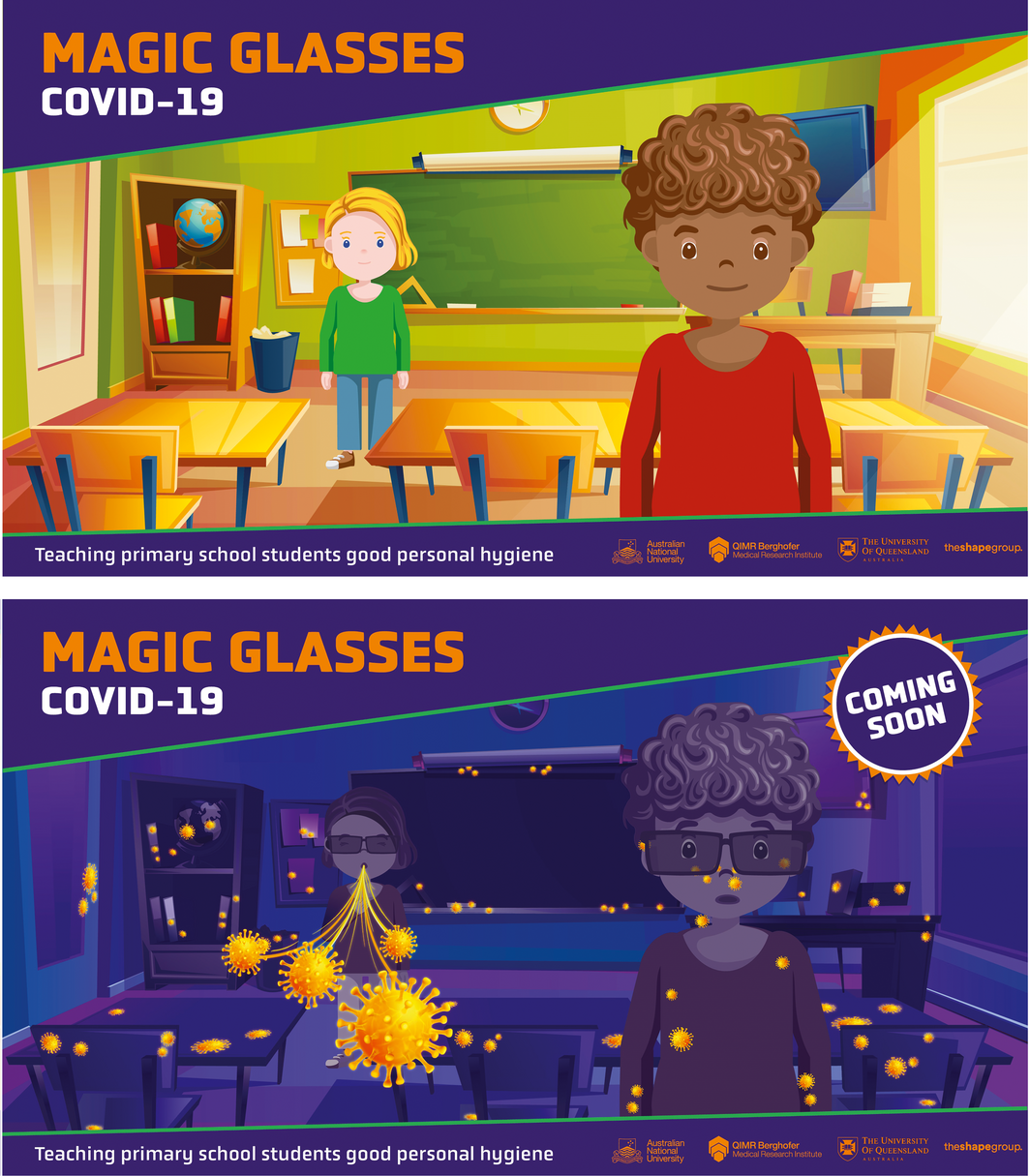To the Editor: The recent article by Hyde1 synthesised the evidence on the role of children (and schools) in the transmission of severe acute respiratory syndrome coronavirus 2 (SARS‐CoV‐2). Hyde concluded that the original perceptions that children do not play a role in transmission are unfounded. Current evidence shows that schools carry a risk of transmission that is dependent on the level of community transmission. Hyde emphasised the urgent need for risk‐reduction measures and advanced the Harvard guidelines for schools.2
We agree with Hyde and suggest that health and education authorities urgently implement risk‐reduction measures in schools. The Harvard guidelines put forth are comprehensive,2 but they need to be taken a step further to include an engaging health education campaign to allay fears and misconceptions and ensure behaviour change. Such messaging around coronavirus disease 2019 (COVID‐19) specifically targeting children has been similarly overlooked to date, and while some children’s books are coming out,3 there are limited age‐specific and engaging health education materials currently available and being systematically implemented in schools.
An entertainment education approach can provide a highly effective forum for health education interventions targeting schoolchildren, and we consider this tactic should be applied to COVID‐19.4 An example is the cartoon video The Magic Glasses, which has proved successful in preventing intestinal worm infections in children.5 The cartoon enables children to identify with characters and visualise the intestinal parasitic worms and their eggs in people and the environment to reinforce the importance of good hygiene and associated health behaviour.4,5 This is directly applicable to the transmission dynamics of SARS‐CoV‐2 — whereby the virus would be visualised in people and the environment (Box) — and the associated messages for prevention. Key messages of such an intervention (The Magic Glasses: COVID‐19) could include hand washing, care in coughing and sneezing, tissue use and disposal, physical distancing, mask wearing, and what to do when feeling unwell.
Health education and promotion are important components of disease prevention, but during disease outbreaks and health emergencies, they play an even more crucial role in an active response by providing a well established method to communicate and engage quickly and effectively with the public and prevent infections. This concept is especially important in the absence of an effective drug, and while it is highly encouraging that several safe and efficacious vaccines against SARS‐CoV‐2 have been developed and are being administered in a number of countries, a few caveats need to be considered: i) they have not been tested in children; ii) their impact on transmission is yet to be realised; and iii) there will be some time before they are rolled out globally.6 Messaging specifically targeting children, who may well be acting as silent transmitters of the virus, is presently lacking. A video or cartoon‐based entertainment education intervention would fill this need and suitably complement the other preventive measures advocated by Hyde.1 With the current debate around school closure and opening, having these preventive interventions in place would help mitigate the COVID‐19 risk and provide greater confidence to authorities and parents alike for re‐opening schools.
- 1. Hyde Z. COVID‐19, children, and schools: overlooked and at risk. Med J Aust 2020; 213: 444–446. https://www.mja.com.au/journal/2020/213/10/covid-19-children-and-schools-overlooked-and-risk
- 2. Jones E, Young A, Clevenger K, et al. Schools for health: risk reduction strategies for reopening schools. Cambridge, MA: Harvard T.H. Chan School of Public Health Healthy Buildings Program, 2020; https://schools.forhealth.org/risk-reduction-strategies-for-reopening-schools/ (viewed Jan 2021).
- 3. Mitchell F. Communicating with children about COVID‐19. Lancet Infect Dis 2020; 20: 1023.
- 4. Gray DJ, Kurscheid J, Mationg ML, et al. Health‐education to prevent COVID‐19 in schoolchildren: a call to action. Infect Dis Poverty 2020; 9: 81.
- 5. Bieri FA, Gray DJ, Williams GM, et al. Health education package prevents worm infections in Chinese schoolchildren. N Engl J Med 2013; 368: 1603–1612.
- 6. Zimet GD, Silverman RD, Fortenberry JD. Coronavirus disease 2019 and vaccination of children and adolescents: prospects and challenges. J Paediatr 2020; https://doi.org/10.1016/j.jpeds.2020.11.002 [Epub ahead of print].






No relevant disclosures.